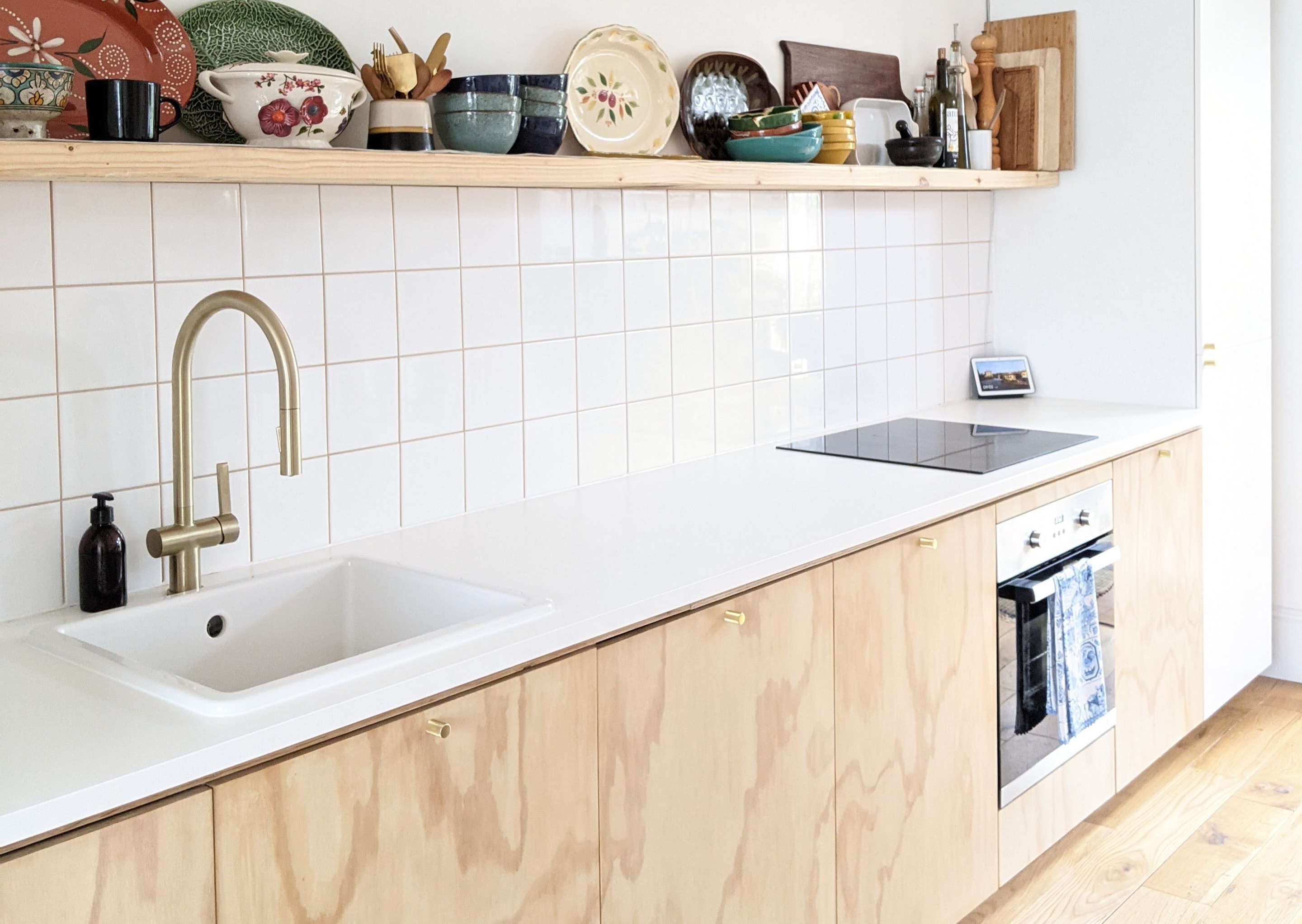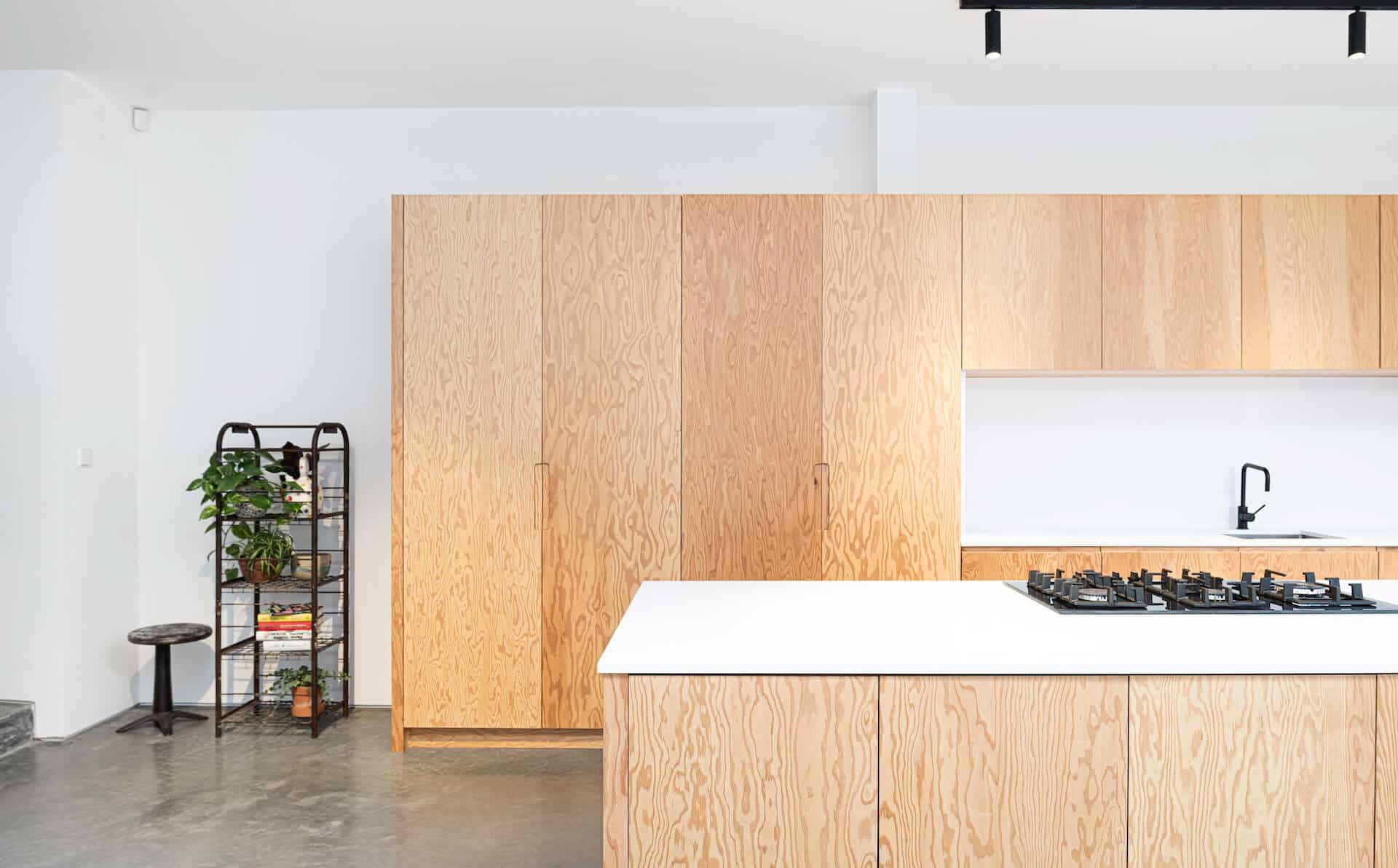Plywood Kitchen Cabinet Door Aesthetics & Design

Plywood offers a surprisingly versatile and aesthetically pleasing material for kitchen cabinet doors. Its strength, affordability, and ability to accept a wide range of finishes make it a popular choice for homeowners and designers alike. This section will explore the design possibilities, showcasing the diverse styles achievable with plywood and the impact of different veneer choices.
Plywood Kitchen Cabinet Door Styles
The style of your plywood cabinet doors significantly impacts the overall look of your kitchen. Choosing the right style complements your kitchen’s design and personal taste. The following table illustrates several popular styles.
| Style Name | Description | Typical Wood Grain | Suitable Kitchen Styles |
|---|---|---|---|
| Slab | Simple, flat panel door with minimal ornamentation. | Any; often features a consistent grain pattern | Modern, Minimalist, Contemporary |
| Raised Panel | Features a central panel raised above the frame, creating a three-dimensional effect. | Oak, Cherry, Maple | Traditional, Shaker, Craftsman |
| Shaker | Simple, rectangular frame with a flat center panel, known for its clean lines. | Maple, Birch | Transitional, Shaker, Contemporary |
| Beadboard | Features vertical or horizontal grooves, creating a textured surface. | Pine, Fir | Farmhouse, Cottage, Coastal |
Impact of Plywood Veneer Types
The veneer significantly impacts the final appearance and feel of the cabinet doors. Different veneers offer distinct colors, grain patterns, and textures.
| Veneer Type | Appearance | Texture | Durability |
|---|---|---|---|
| Oak | Warm, rich tones; prominent grain pattern. | Medium to coarse | High |
| Cherry | Reddish-brown tones; straight to slightly wavy grain. | Medium | High |
| Maple | Light to medium tones; fine, even grain. | Smooth | High |
Plywood Cabinet Door Designs for Different Kitchen Styles
Below are three examples illustrating how plywood can be used to create distinct cabinet door styles for various kitchen aesthetics.
Plywood kitchen cabinet doors – Modern Kitchen: A sleek, minimalist design using a slab door style crafted from a light-colored maple veneer. The doors feature concealed hinges and minimalist, brushed nickel bar pulls for a clean, uncluttered look. The smooth, even grain of the maple complements the modern aesthetic.
Traditional Kitchen: Raised panel doors crafted from a rich cherry veneer create a warm and inviting feel. The doors incorporate detailed molding around the raised panel, adding visual interest. Traditional brass knobs enhance the overall traditional character.
Farmhouse Kitchen: Beadboard style doors made from a painted pine plywood offer a rustic charm. The vertical beadboard pattern adds texture and visual interest. Simple, black cup pulls complement the farmhouse aesthetic, adding a touch of modern contrast to the rustic feel.
Custom Plywood Cabinet Door Design, Plywood kitchen cabinet doors
Imagine a custom cabinet door design incorporating a geometric inlay of contrasting wood veneers. The main door is constructed from a rich walnut plywood. A central geometric pattern, perhaps a series of interlocking squares or triangles, is created using lighter maple and darker ebony veneers. The inlay is precisely cut and meticulously fitted, creating a striking visual effect. The hardware could be sleek, modern handles in brushed brass, complementing the warmth of the walnut and the contrast of the inlay. This design blends modern clean lines with the richness of natural wood, offering a unique and personalized touch to the kitchen.
Plywood Kitchen Cabinet Door Functionality & Durability: Plywood Kitchen Cabinet Doors

Choosing the right material for your kitchen cabinet doors is a crucial decision impacting both the aesthetics and the longevity of your kitchen. Plywood, with its layered construction, offers a compelling blend of strength, affordability, and versatility. Let’s delve into the functionality and durability aspects of plywood kitchen cabinet doors, comparing them to other popular options and exploring their maintenance and installation.
Plywood vs. Other Materials: Durability and Longevity
The durability and lifespan of kitchen cabinet doors are significantly influenced by the chosen material. Understanding the strengths and weaknesses of each option helps make an informed decision. Below is a comparison of plywood against solid wood and MDF (Medium-Density Fiberboard).
- Plywood: Offers good strength-to-weight ratio, resists warping and cracking better than MDF, and is relatively durable. However, it’s susceptible to moisture damage if not properly sealed and finished. Expect a lifespan of 15-20 years with proper care.
- Solid Wood: The most durable option, offering superior strength and longevity (potentially lasting 50 years or more with proper care). However, it’s significantly more expensive and prone to warping and cracking if not properly seasoned and maintained. It also requires more specialized care and maintenance.
- MDF: A cost-effective option, but less durable than plywood or solid wood. It’s susceptible to moisture damage and chipping. Expect a lifespan of around 10-15 years, depending on usage and maintenance.
Plywood Kitchen Cabinet Door Maintenance
Proper maintenance is key to extending the life of your plywood kitchen cabinet doors. Regular cleaning and prompt attention to any damage will keep them looking their best for years to come.
- Cleaning: Regularly wipe down doors with a damp (not soaking wet) cloth and mild detergent. Avoid abrasive cleaners or scouring pads that can scratch the surface. Dry thoroughly after cleaning.
- Repairing Minor Damage: Small scratches can often be buffed out with fine-grit sandpaper followed by a touch-up of paint or stain to match the existing finish. For more significant damage, professional repair might be necessary.
- Preventing Moisture Damage: Ensure proper ventilation in your kitchen to minimize humidity. Address any leaks promptly. Regularly inspect for signs of moisture damage, such as swelling or discoloration.
Cost-Effectiveness, Installation, and Moisture Resistance of Plywood Cabinet Doors
Plywood offers a balanced approach in several key areas.
- Cost-Effectiveness: Plywood is generally less expensive than solid wood, making it a budget-friendly option without sacrificing significant durability.
- Ease of Installation: Plywood is relatively easy to work with, making it a good choice for DIY projects. It’s easier to cut and shape than solid wood, reducing installation time and complexity.
- Moisture Resistance: While plywood is susceptible to moisture damage, proper sealing with a high-quality varnish or paint significantly improves its resistance. This is crucial in a kitchen environment.
Installing Plywood Kitchen Cabinet Doors: A Step-by-Step Guide
Installing plywood cabinet doors is a manageable DIY project with the right tools and techniques.
- Preparation: Carefully measure the existing cabinet openings to ensure accurate door sizing. Gather all necessary tools (see table below).
- Door Hinge Installation: Attach hinges to the doors and cabinet frames according to the hinge manufacturer’s instructions. Ensure proper alignment for smooth opening and closing.
- Door Hanging: Carefully hang the doors onto the hinges, ensuring they are level and plumb. Adjust hinge screws as needed to achieve a perfect fit.
- Handle and Knob Installation: Once the doors are securely hung, install handles and knobs according to the manufacturer’s instructions.
- Final Inspection: Check for proper alignment, smooth operation, and any gaps. Make any necessary adjustments before finishing.
| Tool | Description |
|---|---|
| Measuring Tape | Accurate measurements are crucial for a proper fit. |
| Screwdriver (Phillips and Flathead) | For attaching hinges, handles, and knobs. |
| Level | Ensures doors hang straight and plumb. |
| Drill | For pre-drilling pilot holes to prevent wood splitting. |
| Hinges | Appropriate hinges for your cabinet style. |
| Handles and Knobs | Choose styles that complement your kitchen design. |
Plywood Kitchen Cabinet Door Sourcing & Customization

Choosing the right plywood and customizing your kitchen cabinet doors is crucial for achieving both aesthetic appeal and lasting durability. This section will guide you through the process, from selecting the perfect plywood to applying the final finish and ordering custom-sized doors. We’ll cover sourcing high-quality materials, exploring various finishing options, and detailing the steps involved in working with manufacturers for custom designs.
Selecting Plywood for Kitchen Cabinet Doors
The quality of your plywood directly impacts the longevity and appearance of your kitchen cabinets. Consider these factors when making your selection: wood type, veneer grade, and core construction. Hardwoods like birch, maple, and oak offer superior strength and beauty, while softer woods like pine are more budget-friendly but may require more care. Veneer grade influences the appearance; higher grades feature fewer imperfections and a more consistent grain pattern. A solid core plywood provides superior stability compared to a less dense core. Reputable lumber yards and online retailers specializing in woodworking supplies are excellent resources for sourcing high-quality plywood. For example, a well-known online retailer might offer a wide selection of hardwood plywood sheets with detailed grading information, while a local lumber yard can provide expert advice based on your specific needs and regional availability.
Finishing Options for Plywood Kitchen Cabinet Doors
Finishing your plywood doors enhances their appearance, durability, and protection against moisture and damage. Several options exist, each with unique characteristics:
Painting offers a wide range of color choices and provides a durable, easily cleanable surface. The process typically involves sanding the plywood smooth, applying a primer to ensure proper adhesion, and then applying several coats of paint, followed by a protective clear coat. Painting allows for a wide variety of finishes from glossy to matte.
Staining allows the natural wood grain to show through, enhancing the beauty of the wood. The process involves applying stain, followed by a clear sealant to protect the wood and enhance color depth. Different stains offer various shades and tones, allowing for customization. A darker stain can create a dramatic look, while a lighter stain will highlight the wood’s natural color.
Lacquering provides a hard, protective finish that is resistant to scratches and moisture. The process involves applying multiple thin coats of lacquer, allowing each coat to dry before applying the next. Lacquer offers a high-gloss finish, creating a sleek, modern look.
Designing and Ordering Custom-Sized Plywood Kitchen Cabinet Doors
Many manufacturers specialize in creating custom-sized cabinet doors. To order custom doors, you will need accurate measurements of your existing cabinet openings. Provide detailed specifications including: the dimensions (height, width, and depth) of each door, the type of plywood desired, the chosen finish, and any special features (such as raised panels or decorative molding). Many manufacturers offer online design tools or consultations to assist in the process. It’s important to confirm lead times and costs upfront. Remember to account for potential variations in measurements and the need for slight adjustments during installation. A reputable manufacturer will provide clear communication and detailed quotes before beginning production. Expect to provide detailed drawings or specifications, which can sometimes be created with the help of cabinet design software.
